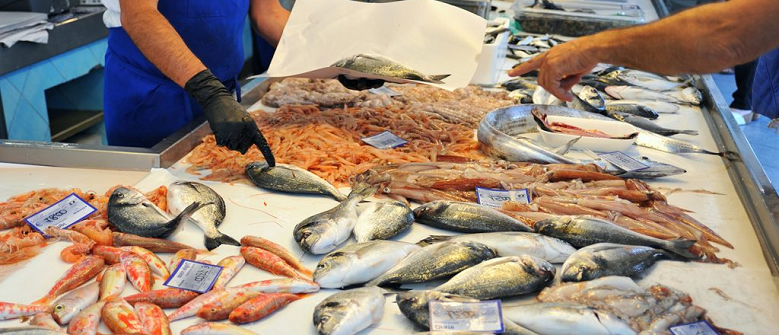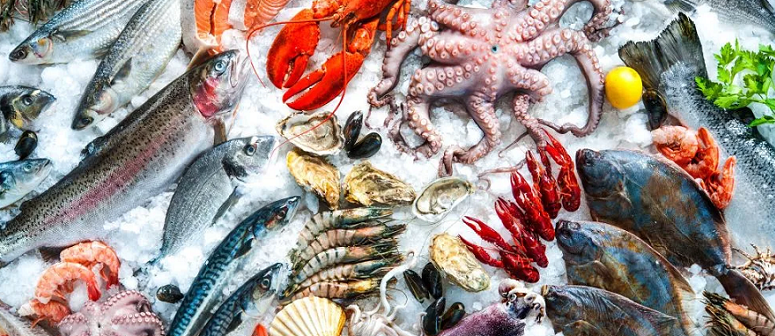Globally, seafood is the top food commodity traded. Over three billion people rely on both wild-caught and farmed finfish and shellfish for their protein needs, ensuring their nutrition and food security. In this exploration, we will examine the environmental issues within the seafood industry and potential solutions.
What Is Sustainable Seafood?
Sustainable seafood refers to seafood that is harvested in a way that preserves the health of the ocean and its ecosystems, while also providing for the long-term viability of the fishing industry and the livelihoods of fishing communities. This involves responsible fishing practices, such as limiting the catch of certain species, protecting marine habitats, and using gear that minimizes bycatch and habitat damage. The goal of sustainable seafood is to ensure the future of seafood as a food source while preserving the health of the ocean and its inhabitants.
Seafood Industry Overview
The seafood industry encompasses all aspects of the harvest, processing, distribution, and consumption of fish, shellfish, and other aquatic animals. It is a complex and global industry that involves the participation of multiple stakeholders, including commercial and artisanal fishermen, seafood processors, distributors, retailers, and consumers.
The industry provides an important source of food and livelihoods for millions of people around the world, but it also faces numerous challenges, such as overfishing, habitat degradation, and climate change. The industry is constantly evolving, with new technologies and management practices being developed to ensure its sustainability and address these challenges. Despite these challenges, the seafood industry remains a vital component of the world food system and continues to grow in size and importance.

Environmental Impacts of Fishing
Fishing, both commercial and artisanal, has significant environmental impacts on marine ecosystems and the species that inhabit them. Some of these impacts include:
- Overfishing: The practice of catching fish faster than they can reproduce can result in depleted fish populations, which can have cascading effects on the entire ecosystem.
- Habitat Destruction: Fishing gear, such as trawls, can damage or destroy sensitive marine habitats, such as coral reefs, mangroves, and seagrass beds.
- Bycatch: The accidental capture of non-target species, such as dolphins, sea turtles, and seabirds, is a major issue in many fisheries.
- Climate Change: Changes in ocean temperature, acidification, and sea level rise are having significant impacts on marine species and ecosystems. The fishing industry is also a major contributor to greenhouse gas emissions.
- Pollution: Fishing operations can result in the release of pollutants, such as fuel and fishing gear, into the marine environment, which can have negative impacts on wildlife and habitats.
Shopping for Sustainable Seafood
Shopping for sustainable seafood can be a challenge, but there are several steps you can take to make informed choices.
Look for Certifications
Looking for certifications is one important way to identify sustainable seafood. Certifications, such as those provided by the Marine Stewardship Council (MSC) and the Aquaculture Stewardship Council (ASC), indicate that a seafood product has been independently verified to meet rigorous sustainability standards.
These certifications can provide consumers with assurance that the seafood they are buying was harvested or farmed in an environmentally responsible manner and that the species they are consuming is sustainably managed. However, it’s worth noting that not all certifications are equal, and some may have higher standards or be more widely recognized than others. It’s always a good idea to research and compare certifications to make an informed choice.

Choose Seafood from Well-managed Fisheries
Choosing seafood from well-managed fisheries is another important aspect of shopping for sustainable seafood. Fisheries that are well-managed take measures to minimize their impact on the marine environment and to ensure the long-term health of fish populations.
These measures can include using selective fishing gear to reduce bycatch, avoiding fishing in sensitive areas, and setting limits on the total amount of fish that can be caught. By choosing seafood from well-managed fisheries, consumers can help support sustainable fishing practices and ensure that the seafood they consume is harvested in an environmentally responsible manner.
Look for seafood that comes from fisheries that are certified by organizations such as the Marine Stewardship Council (MSC) or that are part of a responsible fishery management program.
Ask Your Retailer
Asking your retailer is another important step in shopping for sustainable seafood. Retailers can provide valuable information about the origin of the seafood they sell and how it was caught or farmed. This information can help you make informed choices and choose seafood that has been harvested or farmed in an environmentally responsible manner.
If you’re unsure about the sustainability of a seafood product, don’t hesitate to ask your retailer for more information. By asking questions and being informed, you can help support sustainable fishing practices and make a positive impact on the marine environment.

Avoid Certain Species
Avoiding certain species is another important aspect of shopping for sustainable seafood. Some species of fish are currently overfished and their populations are at risk. By avoiding these species, you can help reduce the demand for unsustainable fishing practices and support the health of fish populations.
Some examples of overfished species include Atlantic cod, Chilean sea bass, and orange roughy. To determine which species to avoid, consult seafood guides, such as those provided by organizations like the Monterey Bay Aquarium Seafood Watch, that rank seafood based on their sustainability.
By making informed choices, you can help ensure that the seafood you consume is harvested or farmed in an environmentally responsible manner.
Eat a Variety of Seafood
Eating a variety of seafood is another important aspect of shopping for sustainable seafood. By diversifying your seafood choices, you can help reduce the demand for any one species, which can help ensure that the species you do consume are harvested or farmed in a sustainable manner.
Eating a variety of seafood can also help you ensure that you are getting a balanced and nutritious diet. Additionally, eating a variety of seafood can help support the health of different fish populations, which can help ensure the long-term sustainability of the marine environment. When shopping for seafood, try to choose a variety of species that are sustainably sourced and responsibly harvested or farmed.

